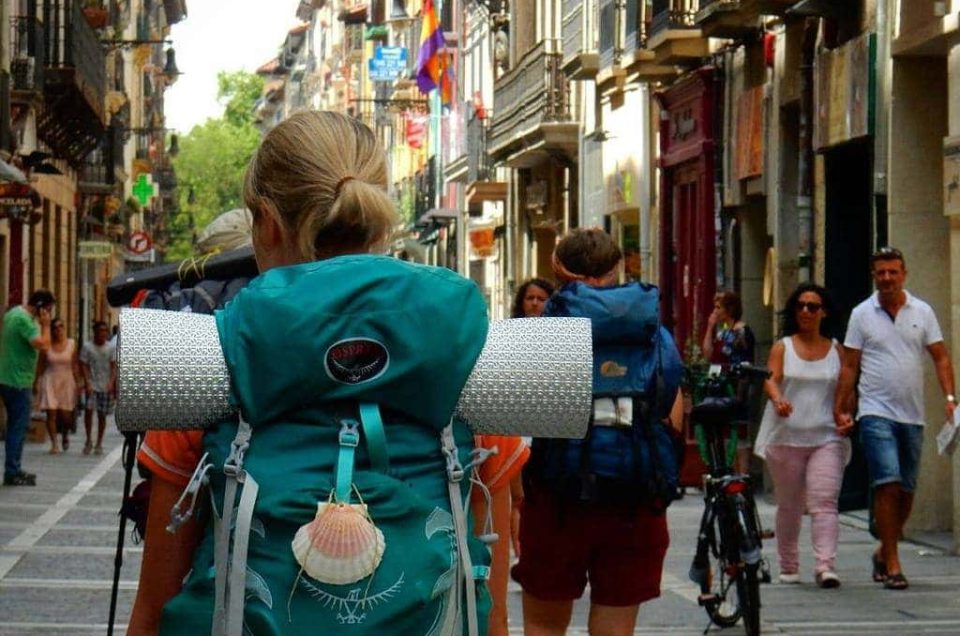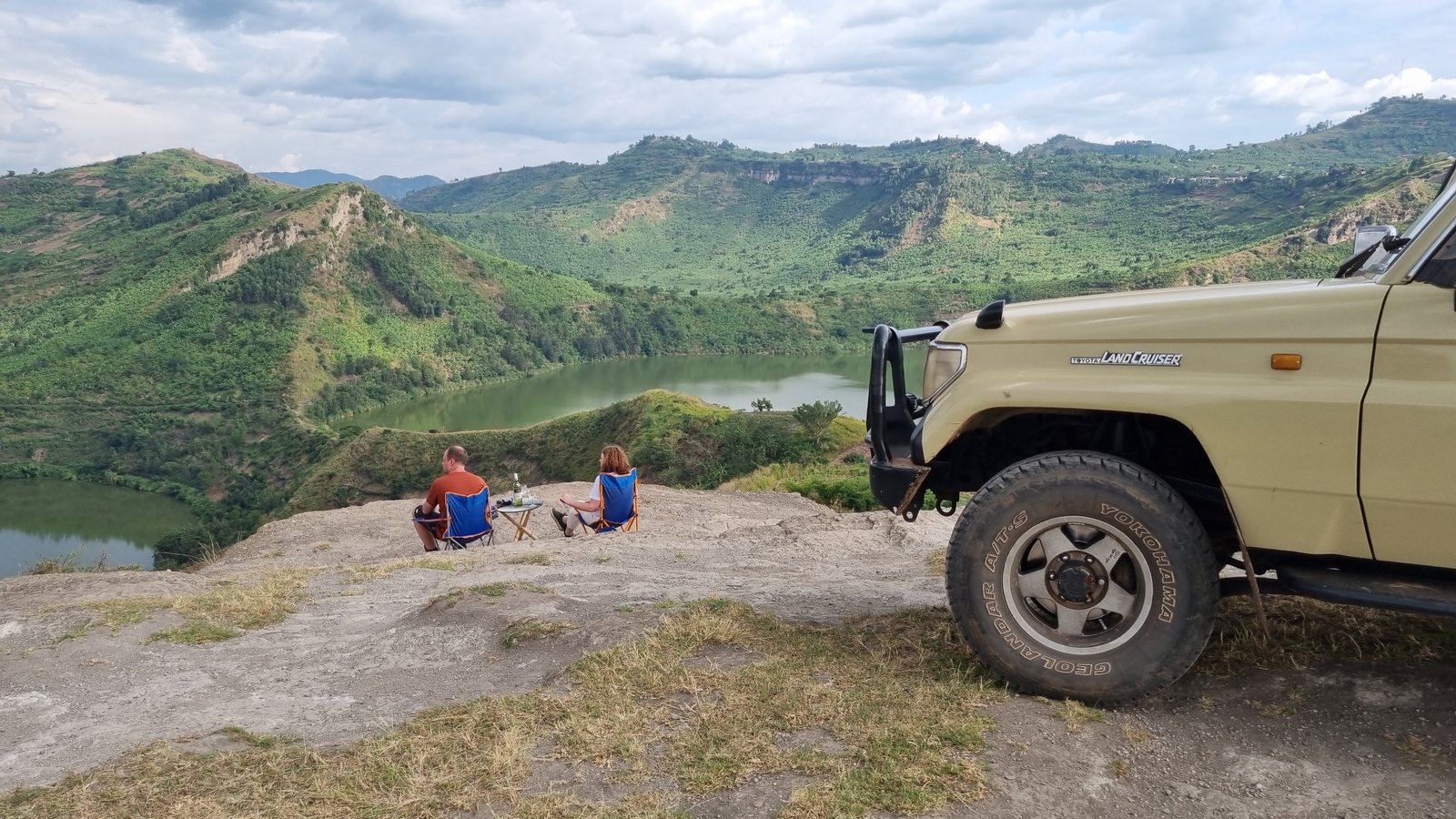- Travel Guides
Things you must know to plan a safari trip to Africa
Are you yearning for an exciting African adventure filled with lively wildlife, diverse cultural experiences, and stunning landscapes? To plan a successful trip to Africa, you must know the best destinations, when to go, where to stay, how long to stay, and the local logistics. Otherwise, planning an African trip is a journey that can change your life, and there are countless remarkable experiences on the continent to discover. To guide you through the wonders of Africa, we’ve compiled a comprehensive guide covering everything you need to know to create a memorable safari in Africa.
Top Africa Safari Destinations To Visit
With so many amazing destinations to choose from, you’re sure to find something that suits your interests while planning your trip around Africa.
1. East Africa
If you’re a wildlife lover or interested in cultural immersion, East African countries like Tanzania, Kenya, Rwanda, and Uganda offer a unique blend of both. Trekking with gorillas in Uganda or Rwanda is a trending adventure you wouldn’t want to miss. And you can comfortably combine it with the Big Game safari experiences in Kenya and Tanzania.
Tanzania’s Serengeti National Park in East Africa is a paradise for wildlife enthusiasts. Witness the great migration of wildebeests and zebras, where the savannah comes alive with the thundering hooves of these magnificent animals. Kenya’s Masai Mara is another gem, offering hot air balloon safaris drifting over the vast plains and encountering the Big Five in their natural habitat. Rwanda and Uganda boast lush jungles teeming with exotic wildlife, with the opportunity for life-changing gorilla trekking experiences.
2. Southern Africa
Meanwhile, Southern Africa boasts gems like South Africa, Botswana, Zambia, Zimbabwe, and Namibia, with breathtaking scenery, world-class game reserves, and vibrant cities.
South Africa’s Kruger National Park presents wildlife and a well-developed tourism infrastructure, making it an excellent introduction for first-time visitors. Botswana offers the Okavango Delta, a UNESCO World Heritage Site teeming with wildlife and a serene, water-laden landscape perfect for mokoro safaris.
Zambia’s Victoria Falls, one of the Seven Natural Wonders of the World, offers an awe-inspiring spectacle. Zimbabwe showcases the ethereal beauty of Mana Pools National Park and Hwange National Park, where elephants roam freely in vast landscapes. Namibia’s otherworldly landscapes, like the Namib Desert and Etosha National Park, promise unique and surreal adventures.
And if you’re seeking adventure, Cape Town, South Africa, is the perfect destination, featuring beautiful beaches, exceptional hiking trails, and awe-inspiring scenery.
3. Egypt and Zanzibar
Egypt, with its ancient pyramids and temples, is a historian’s paradise. The Sphinx, the Nile River, and the treasures of Luxor await the curious traveler.
Zanzibar, located on the Indian Ocean, boasts stunning beaches, a rich cultural heritage, and the UNESCO World Heritage site, Stone Town, blending Arabic, Indian, and African influences.
To make the most of your African adventure, be sure to include specific attractions or experiences that make these locations stand out. Whether it’s a safari tour in the Serengeti, a visit to Victoria Falls, or a wine-tasting tour in South Africa’s Cape Winelands, there’s no shortage of incredible things to see and do across the continent.

Top Destinations for First-time Visitors
Embarking on your first trip to Africa for safari can be an exciting but daunting experience. To help you narrow down your options, we’ve highlighted six countries that offer a perfect introduction to this vibrant and diverse continent.
- Uganda is the perfect destination for those looking for a unique wildlife experience, including the opportunity to see gorillas up close in their natural habitat. If you’re interested in cultural experiences, Rwanda is an excellent choice, with its rich history and vibrant local communities.
- South Africa is a popular destination for first-time visitors, offering a diverse range of experiences, from wildlife safaris to wine tasting tours. Morocco is another great option, with its stunning architecture, bustling markets, and delicious cuisine.
- For those looking for a more off-the-beaten-path experience, Botswana offers the chance to explore the Okavango Delta, one of the world’s largest inland deltas and home to diverse wildlife. Finally, Tanzania is a must-visit for anyone interested in the Great Migration, one of nature’s most spectacular events.
How long should you plan a safari trip to Africa for?
If you’re planning a trip to Africa, it’s essential to know how long to stay to make the most of your time. For a short safari trip visiting one African country, we recommend at least 8 days. If you are visiting more than two countries, we recommend at least two weeks without from and back home.
While eight days or longer is a great starting point, it’s important to consider the specifics of your trip to Africa for safari to determine how much time you should plan for.
To make the most of your trip, consider creating an itinerary that includes specific activities and places to visit. For example, if you’re interested in wildlife encounters, you may want to spend more time on safari. On the other hand, if you’re interested in cultural exploration or relaxation, you may want to allocate your time differently.
Another important consideration is the budget. Safaris can be expensive, but there are ways to save money without sacrificing the quality of your trip. Consider staying in lodges or campsites outside national parks, using cheaper transport or group safaris, and booking activities and tours in advance.
When planning your trip, it’s important to consider the best time of year to go. The best time to visit Africa depends on the region and activities you plan to do. For example, if you’re interested in wildlife viewing, the dry season may be the best time to visit national parks. Additionally, if you’re interested in cultural experiences, some festivals and events may only take place at certain times of the year. Researching the region and activities you’re interested in can help you determine the best time to visit.
Finally, it’s essential to address any safety concerns you may have. While Africa is a safe destination, it’s always a good idea to take precautions to ensure your safety. For example, avoid walking alone at night and follow the advice of your guides when on a safari. Considering these considerations, you can plan the perfect safari trip to Africa.

“Just like shoes can determine a day’s worth peace of mind, mood and confidence, what you pack for your African-Uganda safari will determine how much you will enjoy yourself “.
Imagine the plight of realizing you did not carry a camera charger or extra batteries for it miles deep in the wild. Tales and memories that grow distant with age and time will be all you are left with after that the trip.
We zero it down to this list of the top 10 things to carry for your Uganda Safari as a guide on what to pack to avoid such inconveniences or worse.
1. SAFARI FRIENDLY CLOTHES
Africa is a diverse continent in terms of her people and biodiversity which two factors guide one on what to pack for a Safari. Your comfort is paramount while choosing what to wear for a safari subject to a few things.
These include the culture of the country you have chosen to visit, the activities you plan to engage in on safari, the weather and vegetation. On your Uganda safari does not necessarily entail a head to toe khaki ensemble.
Your clothes should have colors that blend in with your environment such as brown, khaki, olive green and other dull colors because the bright colors scare animals away, blue and black colors tend to attract mosquitoes and tsetse flies.
In choosing fabric, go for that which is not easily stained, easy to hand wash and dry faster. For the ladies, a sports bra will be ideal because of the bumpiness of the rides. On a gorilla trekking or forest walk long sleeved shirts, gloves, long trousers and socks to protect against insect bites and a rain poncho will do.
Uganda is not entirely sunny or hot and the morning and evenings can get quite chilly. Wearing layers to remove or add as the weather changes is ideal. A light weight water proof jacket that can be squashed into your day pack is handy too.
2. SHOES FIT FOR SAFARI
Light weight hiking shoes, comfortable walking shoes for nature walks or hikes and sandals for the evenings at the lodge or camp are suitable.

Pic: Sample packing procedure
Activities like gorilla trekking and chimpanzee trekking may require tougher shoes because you get deep into the forests thus hiking boots come in handy. In all this, consider waterproof shoes made of material that is easy to wash without getting drenched as well as hard rubber soles such that they are not easily penetrated by thorns.
3. SUN PROTECTION GEAR
Heat and Sunshine are Africa’s most renowned attributes yet the chilly mornings and nights on a game drive may momentarily make you forget how much you sweated at noon. Beyond the layered clothing to adapt to the weather changes in a day, there are other items you ought to pack to ease your response to the weather and its change.
Sunscreen: the heat can get brutal so you are better off preventing the discomfort arising from the scorching heat. A wide brimmed safari hat; one with a cord so it does not get blown off as you ride through the wild and one large enough to cover not just your head but neck too. Sunglasses; the rays and wind on the game drives can be harsh on your eyes. Moisture drops for your eyes are complimentary to the sunglasses, the discomfort that the sun has not caused, the wind may do and this is where the drops come in. Moisturizer and lip balm are worthwhile items to carry along for your Uganda Safari.
4. SAFARI GADGETS OR EQUIPMENT
These are handy devices and gadgets that you will need on safari to capture precious sights and sounds in a photo or video or to help you see farther than your eyes can reach. A camera, its charger, extra battery, memory card and binoculars are a priority under this category.
In addition in Uganda you will need the 3 pin UK style adapters but you are better off carrying a convertible adaptor to make your charging easy while at the camp or lodge.
For night walks or caving expeditions, a flashlight or headlamp are essential items.
5. TOILETRIES
Lodges and hotels provide some toiletries as well as laundry services but it is ideal that you have your own in case you decide to camp far from the luxury of the safari lodge.
Some of the items to carry are wet wipes whose essence is to cleanse your face or body of the dust that accumulates from the game drives before you get a full-blown shower.
For the women, pack tampons because they are hard to find and may only be chanced upon in the cities far from the forest or hills you will be hiking through. Toothpaste, a toothbrush and shower shorts to carry your soap to the bathroom at a camp should not be left behind.
6. DAY PACK
A day pack should be one bag that carries a day’s worth of supplies. This may include packed lunch, a rain poncho, a journal in a Ziploc bag to prevent it from getting damp or wet and a few toiletries like sanitizer, a flashlight and wipes. Be careful not to pack too much to weigh you down on your journey!
7. DOCUMENTS AND MISCELLANEOUS ITEMS
A passport, tickets, travel insurance documents, safari itinerary, cash in foreign currency, necessary vaccines like yellow fever vaccine, locks for your luggage and alternative form of identification in case of passport loss. You will need these items for your safari to Uganda and Rwanda.
8. THE MEDICAL KIT
This item is inclusive of some medications that would make your adventure more convenient by preventing or dealing with any unforeseen aches and pains or treat those you already had before your safari.
Insect repellent, a first aid kit with bandages, cotton, antiseptic and all; anti-malaria meds, preventive medication for diarrhea, stomach and headaches, pain killers, your prescription medicines and treatment for any chronic illnesses can constitute this kit.
9. ITEMS TO SUPPORT LOCAL COMMUNITIES
This is not mandatory but worth considering as you prepare to travel to Africa. If your safari itinerary includes community based activities, an item or two could change a life of a community member. From a t-shirt, to a book for a school going child, your gesture will be welcome and a means of giving back to the community that has hosted you during your safari.
10. MOBILE PHONE, IPAD OR TABLET
Most of the lodges you will visit have WIFI in the lounge area. In case you are the kind that likes to upload your experiences on social media on the go – then these items will be of great use to you as you look to keep people at home informed on your journeys.
You can choose to roam or buy a local sim card but this requires that your mobile phone should be unlocked.
Our final tips to you are; to leave room for keepsakes or souvenirs by packing less and reducing the weight of your luggage by packing in a duffel bag as opposed to a suit case with wheels. Packing for a safari can be cumbersome but doing so early enough could be the beginning of a great adventure!
Additionally, consider the different types of safaris available and what to expect on each one. Game drives are the most common type of safari and involve driving around in a vehicle to observe wildlife. Walking safaris involve walking with a guide and observing wildlife on foot. Gorilla trekking involves hiking to observe gorillas in their natural habitat. Be sure to pack accordingly for the type of safari you plan to go on.

10 Steps to Help You Plan Your Africa Safari Trip
1. Research and Choose Your Destination: Explore the unique offerings of each country. Look for places that align with your interests and travel style. For example, if you’re interested in seeing the Great Migration, you might consider Tanzania or Kenya and maybe extend your trip to Uganda or Rwanda for the gorilla trekking experience.
2. Plan Your Itinerary: Sketch out a rough plan of safari activities and places to visit. Consider how much time you have and what you want to see and do. It can be helpful to break your itinerary down by day and include specific activities, such as game drives or cultural tours.
3. Set a Budget: Determine your financial plan to ensure a feasible safari trip to Africa. Research the costs of flights, accommodations, permits, and ground transport, and factor in any additional expenses, such as service tips, meals, and souvenirs.
4. Book Flights, Permits, Accommodation, and Ground Transport: Secure your travel and stay well in advance for better deals. Look for package deals that include accommodation and activities, or book each component separately to get the best deals. Most tour operators in Africa, like Zootopia Game Drive Safaris, offer safari packages that cover everything: consider planning your trip to Africa with a local operator.
5. Check Visa and Health Requirements: Ensure all necessary documents and vaccinations are in order. Visit the website of the embassy or consulate of the country you plan to visit to check the visa requirements and any health-related concerns.
6. Pack Wisely: Assemble your essentials without overpacking. Consider the climate and the activities you have planned, and pack accordingly. Don’t forget to bring a good pair of binoculars and a camera to capture the amazing wildlife sightings.
7. Prepare Finances: Carry local currency and understand payment options. You’ll need cash for things like tips and souvenirs, so make sure you have enough local currency on hand. Also, check with your bank to see if your debit or credit card will work in the country you’re visiting.
8. Safety Precautions: Familiarize yourself with local customs and safety measures. Learn about the culture of the country you’re visiting and follow local customs to avoid offending anyone. Also, be aware of any potential safety hazards and take precautions to stay safe.
9. Stay Flexible: Embrace spontaneity while having a structured plan. While it’s important to have a plan, it’s also important to be flexible and open to changing it if necessary. Be prepared to adjust your itinerary based on weather conditions or unexpected events.
10. Stay Informed: Stay updated with travel advisories and local news. Check the latest travel advisories and stay informed about any local news or events that could affect your trip. Sign up for alerts from your embassy or consulate to stay in the know.

Where to Stay on Safari in Africa
Africa’s top safari destinations offer various accommodation options that cater to every traveler’s preferences.
In East Africa, you can choose from a wide range of lodges and camps that offer immersive safari experiences. Picture yourself waking up to the sound of lions roaring in the distance or watching elephants and giraffes graze just outside your window. A few of our top picks include the luxurious Mara Serena Safari Lodge and the eco-friendly Porini Mara Camp.
If you’re interested in gorilla trekking, Uganda and Rwanda are both great options. In Uganda, Bwindi Impenetrable National Park has several lodges and camps offering gorilla trekking experiences, such as the Nkuringo Bwindi Gorilla Lodge and Mahogany Springs Lodge. In Rwanda, lodges like Singita’s Kwitonda and Bisate Lodge offer luxurious accommodations nearby.
If you’re planning a trip to Cape Town, you’ll find no shortage of hotels and guesthouses to choose from. Some of our favorites include the trendy Cape Cadogan Boutique Hotel and the charming An African Villa.
No need to worry if you’re on a tight budget! Africa safari destinations offer a range of budget-friendly campsites that won’t break the bank. Not only are these campsites affordable, but they also offer a unique and immersive experience that you won’t find in a traditional hotel. So why not try something new and book a stay at one of our recommended campsites, such as the picturesque Kande Beach Camp in Malawi?
Best Safari Trips To Africa
Africa offers an incredible range of experiences that will leave you breathless. You can witness the great migration and encounter the big five in Serengeti-Mara, embark on a gorilla trekking adventure in Uganda, or explore the majestic beauty of the Zambezi River in Zambia and Zimbabwe. Here are eight of the best safari trips to Africa:

1. East Africa’s Mara, Crater & Serengeti Migration: This 9-day safari takes you to Kenya’s Masai Mara and Tanzania’s Serengeti, Lake Manyara, and the Ngorongoro Crater. This tour is focused on wildlife and is a great opportunity to watch the wildebeest migration. It’s perfect for families, groups, couples, and honeymooners. Kenya Safari Itinerary.
2. Honeymoon Cape Town and Kruger: This 9-day tour combines two of South Africa’s most iconic destinations. In Kruger, you will indulge in gourmet food, savor fine wine, witness exceptional views, and experience all the thrills of a Big 5 safari.

3. Crater, Serengeti & Mara: This safari combines Kenya’s Masai Mara with Tanzania’s Serengeti and the Ngorongoro Crater. Experience the thrill of spotting the Big 5 and witnessing the migration of wildebeest along with their predators while enjoying game drives, walks, and horseback safaris.

4. Tanzania Migration & Uganda Gorillas: The 15-day safari and gorilla adventure will take you on a journey filled with cultural encounters, game-viewing like never before, and breathtaking scenery. Witness the beauty of Masai Mara from a hot air balloon during a safari and trek through Bwindi Impenetrable Forest National Park in Uganda for an unforgettable gorilla experience. Uganda & Tanzania Safari

5. Honeymoon in Uganda with primates: On this 10-day honeymoon trip, you’ll get to see chimpanzees and gorillas in Uganda, and also enjoy some lovely experiences at the Nile River’s source. See detailed honeymoon itinerary
6. Scenic Tanzania Safari: This safari is great for couples who enjoy rugged landscapes and want to experience the wilderness up close. You’ll be staying in cozy lodges and camps, with the best views of nature’s amazing shows.

7. Rwanda Gorillas and Serengeti Wildlife Safari: This adventure starts in Kigali, Rwanda’s capital city. You’ll explore the city’s culture and learn about its history, including the tragic genocide. Next, you’ll head into the rainforest of Volcanoes National Park to meet the elusive mountain gorilla family. After your gorilla trek, you’ll take a flight from Kigali to Serengeti and witness the great migration. Finally, you’ll spend three days exploring the Ngorongoro Crater before departing from Kilimanjaro International Airport. Gorillas and Serengeti Safari Detilas.
With a seasoned private guide accompanying you throughout the trip, you can enjoy a comprehensive knowledge of the region while ensuring a family-friendly experience
if you loved this advise, I believe you will enjoy the safety tips we gave in our travel-tips-blog-section as attached in the link 4 Tips To Keep You Safe on Your East African Safari
For more information contact us on +256 750 383 994








2 Comments
[…] it’s possible to go on a safari drive in Uganda alone, most tourists prefer to have a local expert guide them. This ensures a more […]
yes its very possible, you do a self drive safari, but its always recommended you go with a certified tour operator to give yourself a chance to seat back relax and enjoy your safari. Let them handle all bookings, stress about your welfare and all that comes with travel planning.